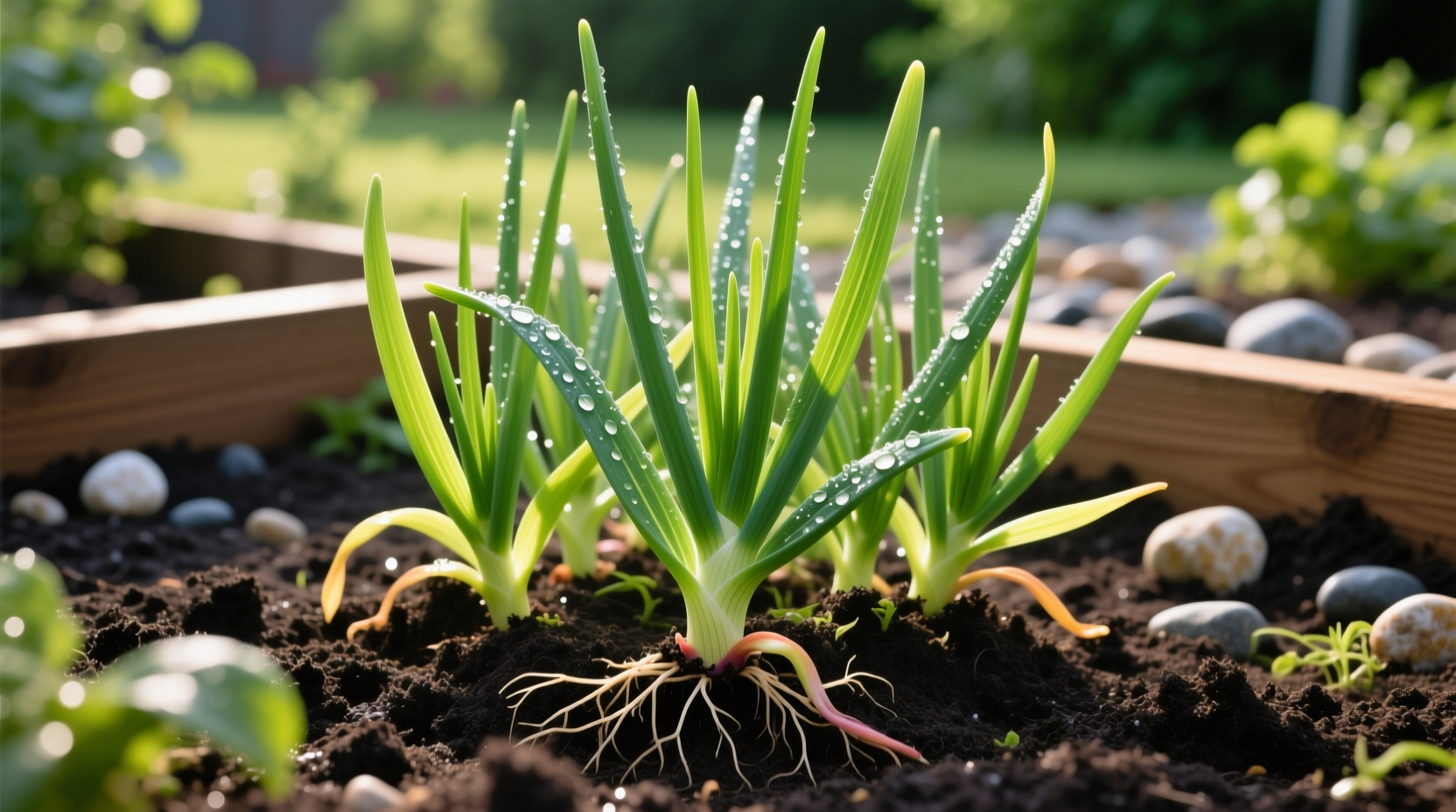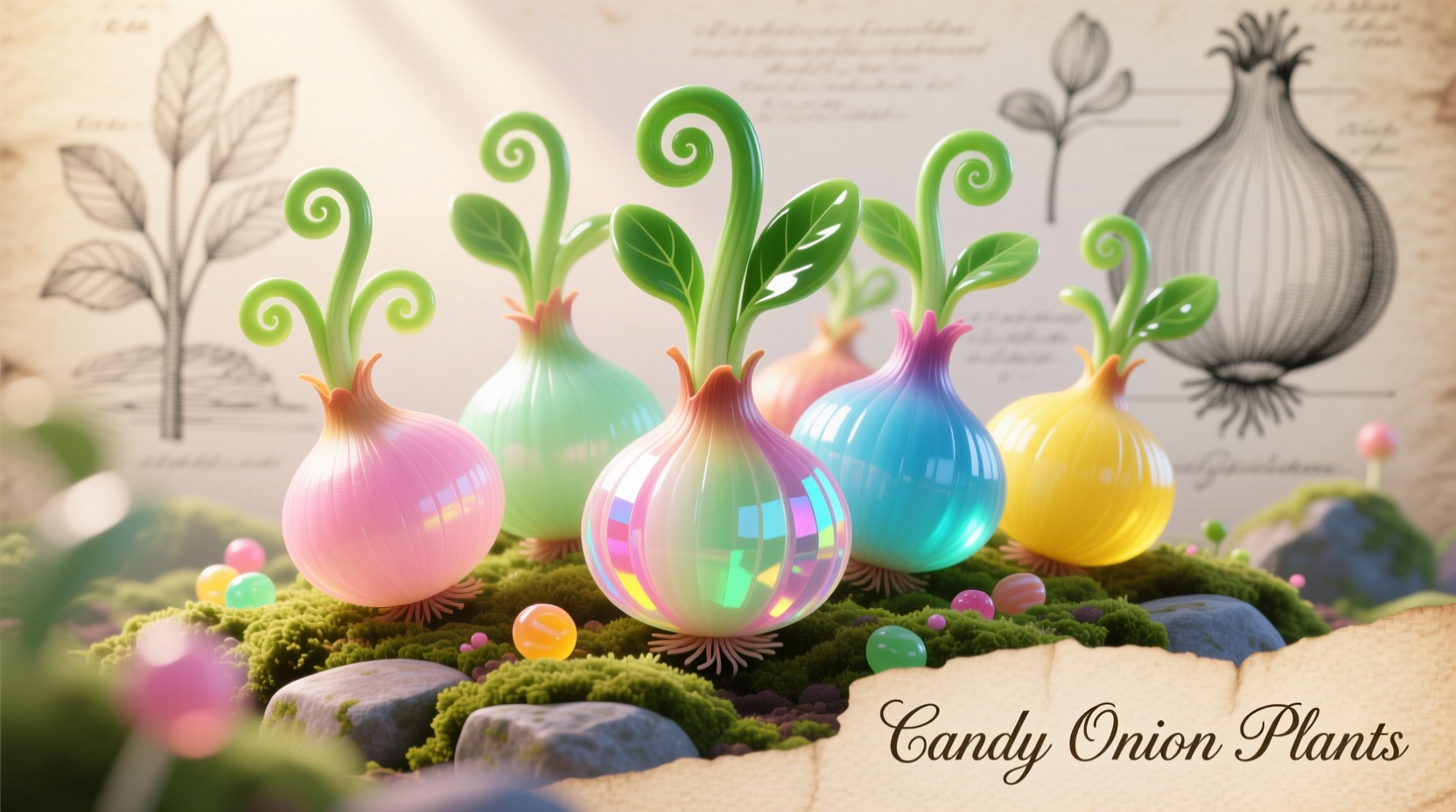Many gardeners search for "candy onion plants" expecting a special variety with exceptional sweetness—and they're right. The Candy Hybrid onion delivers precisely that: a remarkably sweet flavor profile that makes it perfect for fresh eating, grilling, and caramelizing without the intense bite of traditional storage onions.
Understanding Candy Hybrid Onions: More Than Just a Sweet Name
Despite the confusing "candy" moniker, this isn't a genetically modified super-sweet onion but rather a carefully bred F1 hybrid developed specifically for its exceptional sugar-to-pyrune (pungency) ratio. Developed by agricultural researchers seeking to create a reliable sweet onion for northern climates, Candy Hybrid performs well in USDA zones 3-9, unlike many sweet onion varieties that require southern growing conditions.
| Characteristic | Candy Hybrid | Vidalia | Walla Walla |
|---|---|---|---|
| Days to Maturity | 100-110 | 100-110 | 90-100 |
| Best Growing Zones | 3-9 | 7-9 | 6-9 |
| Sugar Content | High (6-8%) | Very High (7-9%) | High (6-7%) |
| Storage Life | 4-6 months | 2-3 months | 2-3 months |
| Disease Resistance | Pink root, mildew | Limited | Moderate |
This comparison shows why Candy Hybrid has become a favorite among home gardeners—it offers the sweetness of southern varieties with better cold tolerance and longer storage capability. According to research from Cornell University's agricultural extension, Candy Hybrid maintains its quality even when grown in cooler northern climates where traditional sweet onions struggle.
Your Step-by-Step Growing Guide for Success
Starting Your Candy Onion Journey
Unlike many sweet onions that must be direct-seeded, Candy Hybrid performs best when started indoors 8-10 weeks before your last expected frost date. This head start is crucial because:
- Sweet onions require a specific day-length (14-15 hours) to form bulbs properly
- Starting indoors ensures plants reach the right size before day-length triggers bulb formation
- Transplanted seedlings establish more quickly than direct-sown seeds
Use a sterile seed starting mix and maintain temperatures between 65-75°F (18-24°C). Keep seedlings under grow lights for 14 hours daily to prevent legginess.
Soil Preparation: The Foundation of Sweetness
Candy Hybrid onions demand well-prepared soil for optimal growth and sweetness:
- pH Level: 6.0-6.8 (slightly acidic to neutral)
- Soil Type: Loose, well-draining loam amended with 3-4 inches of compost
- Nutrient Needs: High phosphorus at planting, balanced NPK during growth
- Spacing: 4-6 inches between plants in rows 12-18 inches apart
Research from the University of California Agriculture and Natural Resources confirms that soil pH directly impacts onion sweetness—more acidic soils produce milder, sweeter bulbs. Test your soil before planting and amend as needed.
Watering Wisdom for Maximum Sweetness
Consistent moisture is non-negotiable for Candy Hybrid onions. Inconsistent watering causes stress that increases pungency:
- Provide 1 inch of water weekly (more during hot, dry periods)
- Mulch with straw to maintain consistent soil moisture
- Reduce watering 2-3 weeks before harvest to improve storage quality
A study published in the Journal of Agricultural and Food Chemistry demonstrated that onions receiving consistent moisture throughout their growth cycle developed 15-20% higher sugar content than those subjected to drought stress.
Common Challenges and Solutions
Pest Management Without Pesticides
Candy Hybrid shows good resistance to many common onion pests, but watch for these issues:
- Thrips: Tiny insects causing silvery streaks on leaves. Control with neem oil sprays every 7-10 days.
- Onion Maggots: Rotate crops annually and use floating row covers at planting.
- Pink Root: Candy Hybrid has good resistance, but avoid planting in previously infected soil.
Disease Prevention Strategies
Prevention works better than cure for onion diseases:
- Practice 3-4 year crop rotation away from all alliums (onions, garlic, leeks)
- Water at soil level to keep foliage dry and prevent fungal diseases
- Remove and destroy any plants showing signs of disease immediately

Harvesting and Storage: Preserving That Sweet Flavor
Knowing when to harvest Candy Hybrid onions ensures peak sweetness and storage potential:
- Harvest Timing: When tops naturally fall over (approximately 110 days after transplanting)
- Curing Process: Dry bulbs in a shaded, well-ventilated area for 2-3 weeks
- Storage Conditions: Cool (32-40°F), dry (65-70% humidity), and dark location
Unlike many sweet onions that store poorly, properly cured Candy Hybrid bulbs maintain their quality for 4-6 months. The USDA Agricultural Research Service confirms that curing at 75-80°F with good airflow significantly extends storage life while preserving flavor compounds.
Culinary Applications: Making the Most of Your Sweet Harvest
The Candy Hybrid's balanced sweetness shines in these applications:
- Raw preparations: Perfect for salads, salsas, and sandwiches without causing tears
- Caramelizing: Develops deep, complex flavors with less stirring than pungent varieties
- Grilling: Holds shape well and develops amazing sweetness on the barbecue
- Pickling: Creates exceptionally sweet-tart refrigerator pickles
Chef's tip: For maximum sweetness in raw applications, slice Candy Hybrid onions and let them sit for 15 minutes before serving. This allows enzymatic reactions to further reduce pungent compounds while enhancing sweet flavor notes.
Why Candy Hybrid Outperforms Other Sweet Onions
While Vidalia and Walla Walla onions get more attention, Candy Hybrid offers distinct advantages for home gardeners:
- Climate adaptability: Grows well in both northern and southern regions
- Disease resistance: Better protection against common onion ailments
- Storage capability: Lasts significantly longer than most sweet varieties
- Reliable production: Forms uniform bulbs even in less-than-ideal conditions
According to garden trials conducted by the National Gardening Association, Candy Hybrid produced 25% higher yields with more consistent bulb size than comparable sweet onion varieties across diverse climate zones.











 浙公网安备
33010002000092号
浙公网安备
33010002000092号 浙B2-20120091-4
浙B2-20120091-4